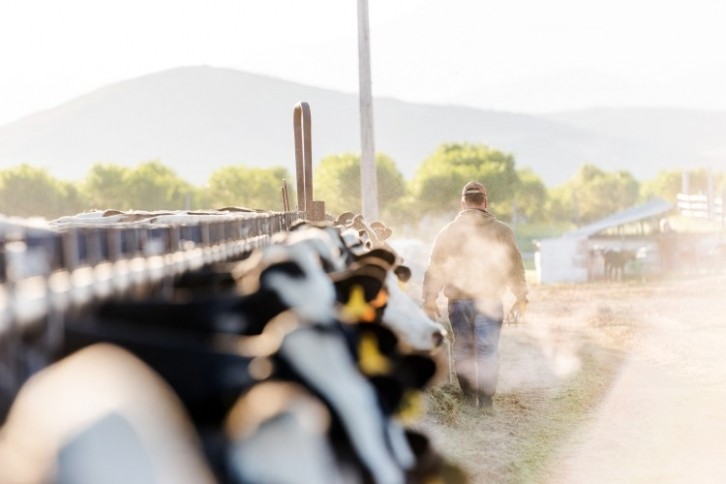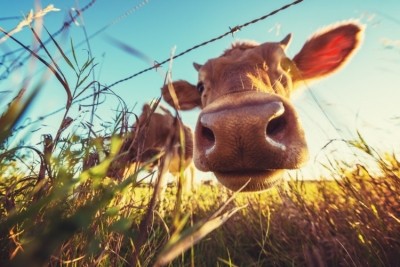US dairy farmers to receive financial relief over bird flu outbreak

The US Department of Agriculture (USDA) and the US Department of Health and Human Services are rolling out up to $28,000 per farm to boost on-site biosecurity, with additional fund to cover milk losses also in the works.
Announced on May 10, the financial package will be available ‘over the next 120 days’.
The news comes after USDA imposed pre-movement testing for dairy cattle and agreed to cover the testing costs of samples tested at National Animal Health Laboratory Network (NAHLN) laboratories.
What are US dairy farmers doing to contain the spread?
US dairy farmers had been told to urgently bolster their biosecurity practices after the virus, known as A(H5N1) or influenza A, was found to have spread to US dairy cattle for the first time in March this year.
Some of the measures touted in official guidelines included wearing protective equipment, such as respiratory masks and gloves; cleaning vehicles more often to avoid the spread of pathogens across the site, and keeping cattle away from potential sources of pathogens, such as water troughs.
Producers were not originally offered reimbursement to cover costs associated with adopting more stringent biosecurity measures, nor were they paid for milk losses (affected farms record around 20% milk loss, according to veterinarians monitoring the outbreak).
But with the number of detections growing to 42 across 9 US states* and the outbreak raising global concerns, including from the World Health Organization, the authorities want to incentivize farmers to limit the spread of H5N1.
What’s in the USDA financial package for dairy farmers?
Here’s a rundown of what is being made available to dairy farmers.
- Up to $2,000 per month per premise for supplying PPE to employees and/or providing outwear uniform laundering. The incentive is also available for producers whose workers participate in USDA and CDC’s workplace and farmworker study; workers meanwhile are eligible for compensation for taking part in the study.
CDC is coordinating with state authorities to make existing stockpiles of PPE available to affected farms and farmworkers on dairy and poultry farms and in slaughterhouses and prioritize PPE supply to affected operations.
- Up to $1,500 per premise to develop biosecurity plans, particularly for individuals e.g. milk haulers, veterinarians, feed trucks, AI technicians who frequently move between dairy farms. Plus: $100 for producers who purchase and use an in-line sampler for their milk system.
- Up to $2,000 per month per premise for setting up a system to heat-treat raw milk from sick cows in order to inactivate the virus.
Heat treatment – or pasteurization - is the only way to effectively inactivate the virus in milk, according to the Food and Drug Administration. Farmers have been told to dispose of raw milk produced by infected cows, but evidence has emerged that the viral particles the animals shed in milk may be increasing the risk for transmission to other farm animals or humans on-site. Heat-treating milk would therefore make it safe to dispose of.
- Up to $100 per month for covering the shipping costs of up to two shipments of samples for H5N1 testing; that’s up to $50 per shipment.
Details on how producers can access and apply for the financial tools will be released shortly.
How can farmers be compensated for milk production losses?
USDA is reportedly set to release additional funding through ELAP, the Emergency Assistance for Livestock, Honey Bees, and Farm-raised Fish Program, to offset economic losses caused by a decrease in milk production in herds affected by the virus.
Almost $100m for movement restrictions
The USDA is also setting aside $98m in existing funds for APHIS to fund actions that would further limit the movement of dairy cows within states where the virus has been detected.
The funding is aimed at supporting actions to limit additional herd-to-herd transmission, since new cases have continued to emerge in the same states that reported positive herds earlier in the outbreak.
How many people have been affected by the virus?
The Centers for Disease Control and Prevention (CDC) said that so far more than 260 people had been closely monitored as a result of being exposed to infected or potentially infected animals, with at least 33 being tested after developing flu-like symptoms. However, no additional human cases have been reported since a Texas farmworker tested positive for the virus.
State health authorities have been tasked with monitoring and testing people who had been exposed to infected animals and develop symptoms.
CDC maintains that the current risk to the general public is low, but says that high levels of the virus had been found in raw milk. Both CDC and FDA recommend against raw milk consumption, though it is still unknown what the level of risk to humans is from drinking raw milk.
“To date, A(H5N1) viruses have not acquired the ability to bind to virus receptors that are most prevalent in the upper respiratory tract of people,” CDC explained. “If a person consumed raw milk with live A(H5N1) virus, the person could become infected, theoretically, by the virus binding to a limited amount of virus receptors in the upper respiratory tract or by aspiration of virus into the lower respiratory tract where receptors that A(H5N1) viruses can bind to are more widely distributed."
*At the time of writing.






